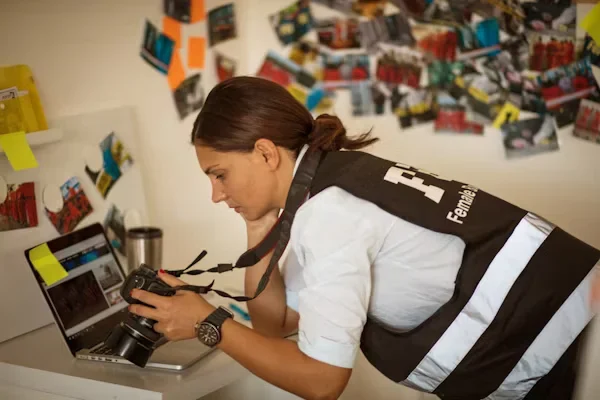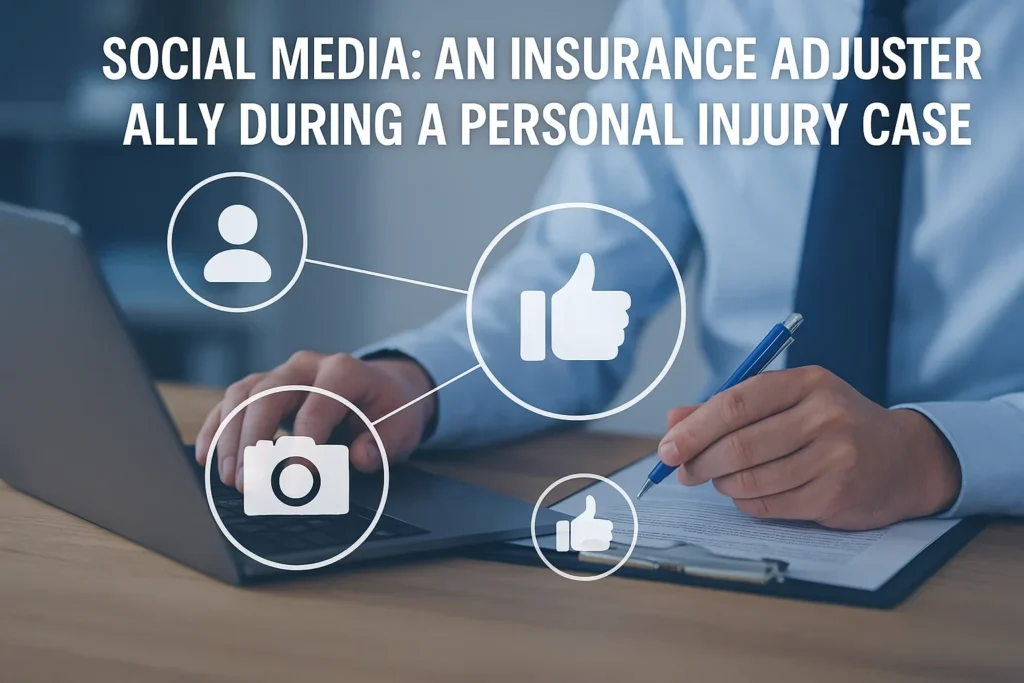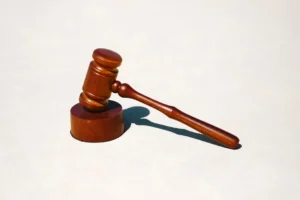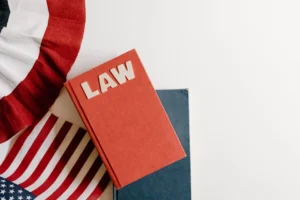Disclaimer: The information provided in this article is for informational purposes only and does not constitute legal advice. For advice specific to your case, please consult a licensed attorney. The author and publisher are not responsible for any actions taken based on this content.
Social media has transformed personal injury cases, offering insurance adjusters a powerful tool for evaluating claims. Posts, photos, and location check-ins can provide critical insights into a claimant’s daily activities, sometimes contradicting injury allegations. Courts are increasingly accepting Social platform content as evidence, making it a key factor in settlements and litigation. This article will discuss how insurance adjusters leverage Social platforms while navigating privacy laws and evidentiary standards in injury lawsuits.
Verifying the Severity of Injuries

One of the primary reasons adjusters scrutinize social networks is to evaluate the legitimacy of an injury claim. A claimant who reports severe physical limitations but posts photos of themselves engaging in strenuous activities may undermine their case. Courts have upheld such publicly available evidence, emphasizing its relevance in determining the extent of injuries.
Identifying Contradictions in Testimonies
Discrepancies between a claimant’s statements and online presence can significantly impact a Plaintiff injury case. If a plaintiff alleges they cannot work due to an accident but posts about job promotions or vacations, their credibility may be called into question. Personal injury lawyers at Singleton Schreiber and other top firms understand how courts often accept social media evidence when it contradicts official statements or medical records, influencing case outcomes and settlement negotiations.
Assessing Emotional and Psychological Impact

Beyond physical injuries, claimants often seek compensation for emotional distress. Posts showcasing a vibrant social life, travel experiences, or participation in recreational activities may weaken such claims. While a single post may not be conclusive, a pattern of behavior inconsistent with the alleged distress could be persuasive in negotiations or court proceedings.
A pattern of posts showcasing an active social life may call into question whether the psychological effects of the injury are as severe as claimed. While a single post might not carry significant weight, the accumulation of such posts could play a role in court proceedings or settlement negotiations. Insurance adjusters and legal teams closely analyze social networks
content for these patterns, as they can provide valuable evidence in determining the legitimacy of emotional distress claims.
Legal Boundaries and Privacy Considerations
Although Networking sites can be a goldmine of information, insurance agents must operate within the bounds of the law. Courts distinguish between publicly accessible content and private information requiring legal authorization. Attempts to gain access through deceptive means, such as fake friend requests, may be deemed unethical and inadmissible.
Legal experts caution that adjusters must respect privacy rights while collecting evidence from Networking sites. In some instances, claimants may be legally compelled to provide access to private content if it is reasonably likely to contain material evidence that could affect the outcome of a case. However, adjusters should be aware of the legal requirements to avoid overstepping boundaries and jeopardizing the case.
Court Precedents and Admissibility of Social Media Evidence

Judicial opinions vary regarding the admissibility of evidence from online platforms. Courts allow such proof if it is relevant and authentic. In some jurisdictions, claimants may be compelled to provide access to private content if it is reasonably likely to contain material evidence. The evidence must meet evidentiary standards, such as authentication and reliability, to be persuasive in legal proceedings.
In some cases, claimants may be required to provide access to private content if it is reasonably believed to contain information that could substantially affect the case. However, this practice is subject to ongoing legal debates and differs depending on the region or court in question. Adjusters must be familiar with local regulations to ensure that social channels evidence is used appropriately and meets the standards for admissibility in court.
Legal counsel’s role in social media scrutiny
Both of them are aware of the importance of social channels in personal injury litigation. Attorneys advise clients to limit their online activity, as even seemingly harmless posts can be misinterpreted and used against them in court. Defense attorneys are leveraging this to challenge exaggerated or fraudulent claims, thereby reinforcing the importance of digital evidence in modern legal disputes.
Claimants are often instructed to limit their online activity or to avoid sharing content that could be misinterpreted as undermining their claims. Defense attorneys utilize evidence from online platforms to challenge exaggerated or fraudulent claims, underscoring the importance of closely monitoring online activity. Legal professionals must evaluate evidence obtained from social channels in a manner that adheres to both ethical and legal guidelines. The role of this in Plaintiff injury litigation continues to evolve, but its impact on case strategy is significant and cannot be overstated.
Final Thoughts
It is a powerful investigative tool for adjusters, offering insights that traditional methods may not uncover. Legal and ethical considerations must guide the use of this technology. While claimants should be mindful of their digital presence, adjusters must ensure that their findings align with the standards of admissible evidence. It shapes case outcomes in the evolving landscape of Plaintiff injury law, reinforcing the need for vigilance on both sides.












